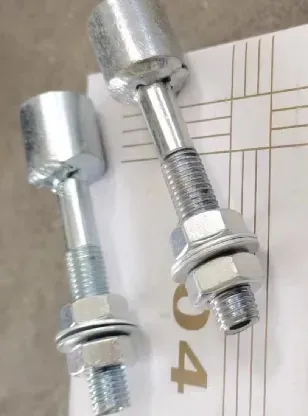loading...
- No. 9, Xingyuan South Street, Dongwaihuan Road, Zaoqiang County, Hengshui, Hebei, China
- admin@zjcomposites.com
- +86 15097380338
- Welcome to visit our website!
reverse osmosis system
Understanding Reverse Osmosis Systems An Essential Guide
Reverse osmosis (RO) systems have gained significant attention in recent years due to their ability to purify water efficiently. This technology is widely employed in residential, commercial, and industrial applications. To understand the importance and functionality of reverse osmosis systems, it's essential to delve into how they work and the benefits they offer.
What is Reverse Osmosis?
Reverse osmosis is a water purification process that utilizes a semipermeable membrane to remove ions, unwanted molecules, and larger particles from drinking water. The term osmosis refers to the natural movement of water molecules through a membrane from a region of low solute concentration to a region of high solute concentration. In reverse osmosis, this process is reversed pressure is applied to the more concentrated side, forcing water molecules through the membrane and leaving contaminants behind.
The Components of a Reverse Osmosis System
An RO system typically consists of several key components
1. Pre-filters These filters remove larger particles and sediment from the water, helping to protect the RO membrane. 2. Reverse Osmosis Membrane This is the core of the system where the actual filtration takes place. It allows water to pass through while blocking contaminants.
3. Post-filters After the water has passed through the RO membrane, it may go through additional post-filters to improve taste and remove any residual contaminants.
4. Storage Tank Clean water is stored in a tank until it is needed. This ensures a ready supply of purified water.
5. Faucet A dedicated faucet is usually installed at the sink to dispense the purified water, keeping it separate from regular tap water.
reverse osmosis system

Advantages of Reverse Osmosis Systems
1. Highly Effective Filtration RO systems can remove up to 99% of dissolved salts, contaminants, and impurities, improving water quality significantly. This includes harmful substances like lead, chlorine, fluoride, and other toxins.
2. Improved Taste and Odor By removing impurities, RO systems not only ensure better health but also enhance the taste and odor of drinking water, making it more palatable.
3. Cost-Effective While the initial investment may be high, RO systems can save money in the long run by eliminating the need for bottled water and reducing healthcare costs associated with consuming contaminated water.
4. Environmentally Friendly Using RO systems reduces plastic waste from bottled water, contributing to a healthier planet.
5. Versatility RO systems can be used for various applications, from providing clean drinking water in homes to supplying purified water in restaurants, coffee shops, and industries.
Maintenance of RO Systems
To ensure optimal performance, regular maintenance of reverse osmosis systems is crucial. This includes replacing pre-filters and post-filters according to the manufacturer's recommendations and regularly checking the RO membrane for signs of fouling or degradation. Additionally, sanitizing the system periodically helps to maintain water quality and prevent bacterial growth.
Conclusion
In an era where water quality is becoming increasingly critical, reverse osmosis systems stand out as a reliable solution for purifying drinking water. Their ability to remove a wide range of contaminants makes them an investment worth considering for households and businesses alike. By understanding how RO systems work and maintaining them properly, consumers can enjoy the many benefits of clean, safe, and great-tasting water. As technology advances, we can expect even more efficient and user-friendly designs that will simplify access to purified water for everyone.
-
The Rise of FRP Profiles: Strong, Lightweight, and Built to LastNewsJul.14,2025
-
SMC Panel Tanks: A Modern Water Storage Solution for All EnvironmentsNewsJul.14,2025
-
GRP Grating: A Modern Solution for Safe and Durable Access SystemsNewsJul.14,2025
-
Galvanized Steel Water Tanks: Durable, Reliable, and Ready for UseNewsJul.14,2025
-
FRP Mini Mesh Grating: The Safer, Smarter Flooring SolutionNewsJul.14,2025
-
Exploring FRP Vessels: Durable Solutions for Modern Fluid HandlingNewsJul.14,2025
-
GRP Structures: The Future of Lightweight, High-Performance EngineeringNewsJun.20,2025
